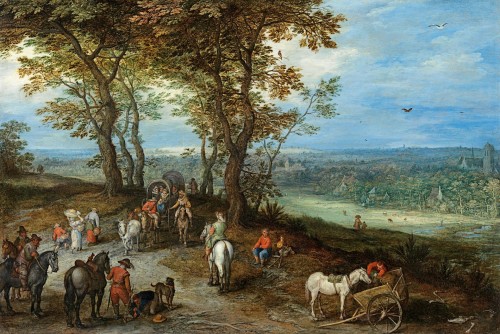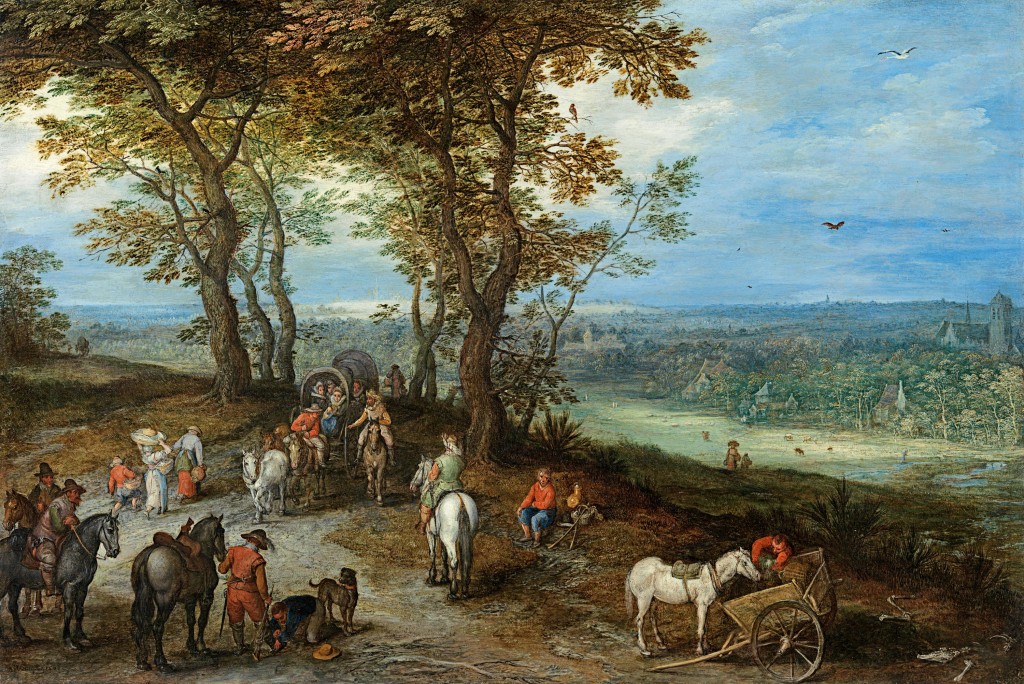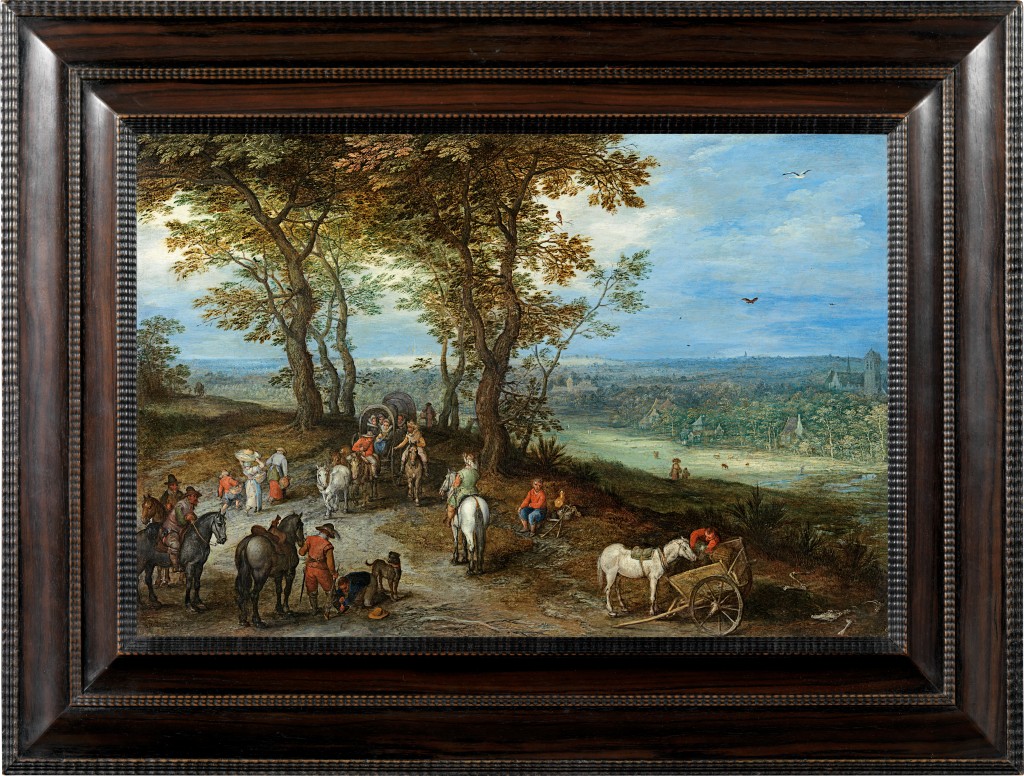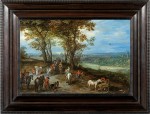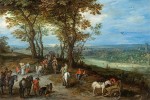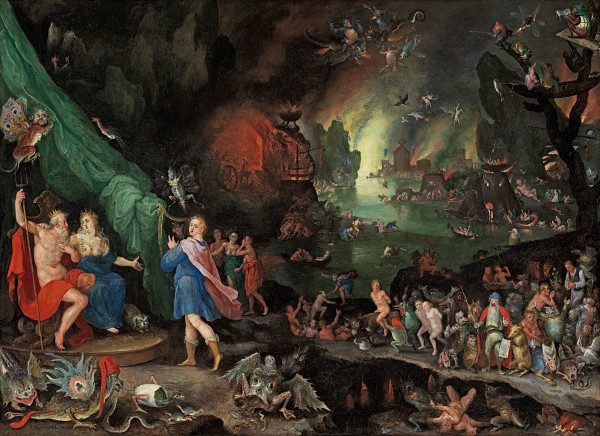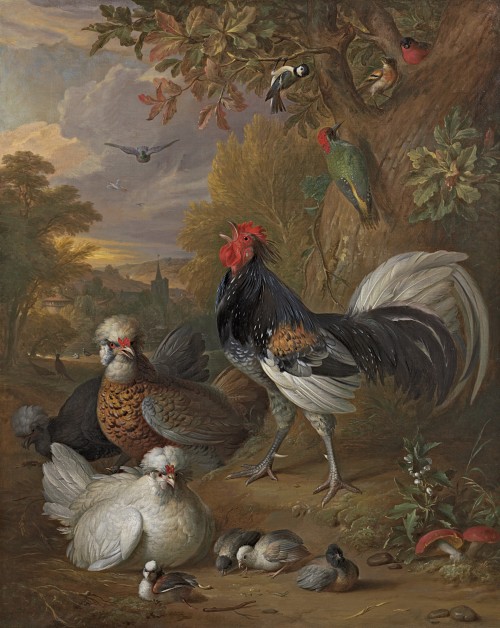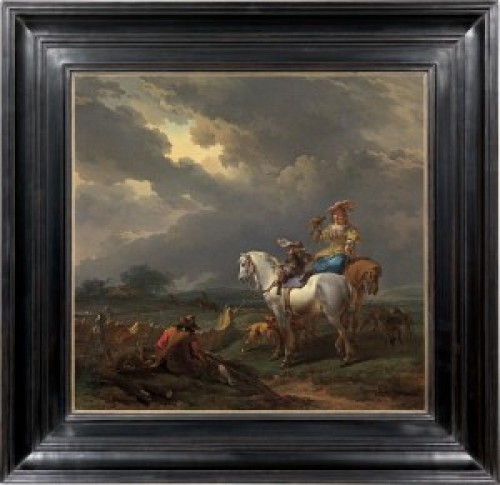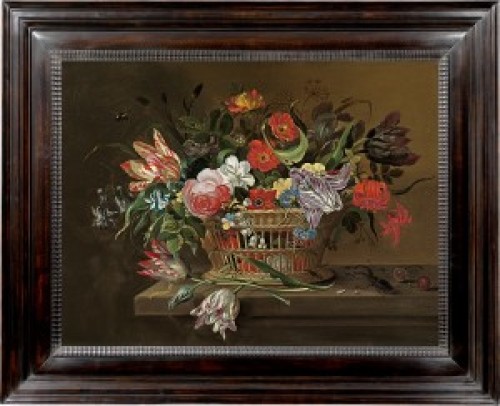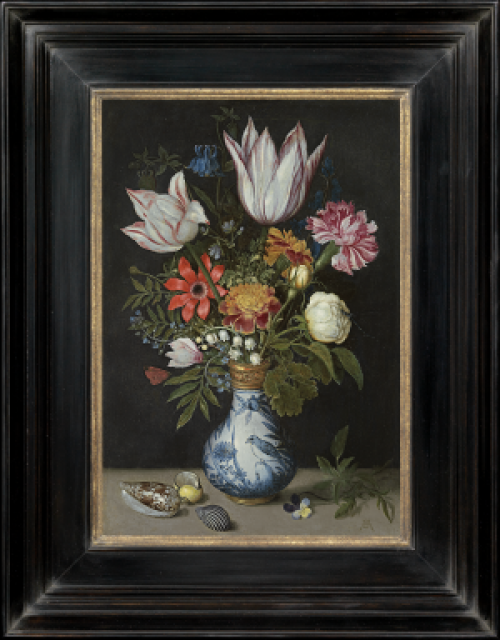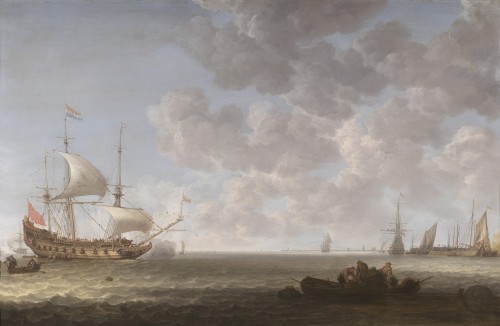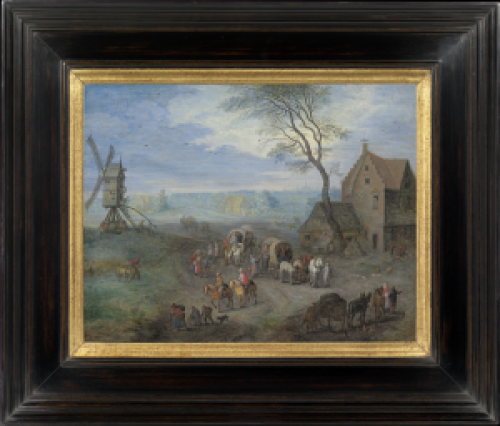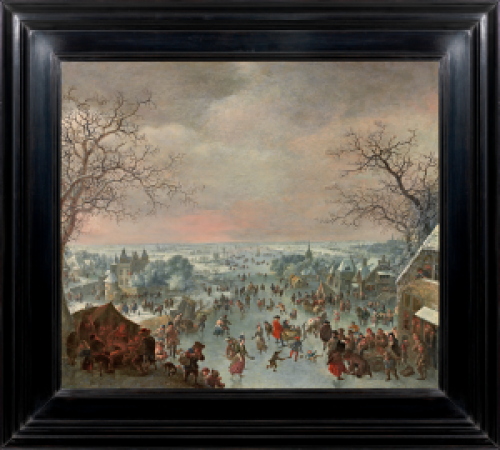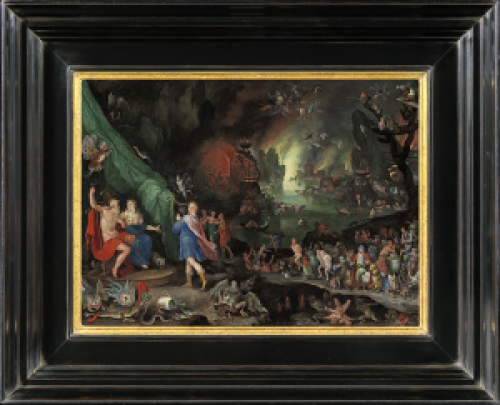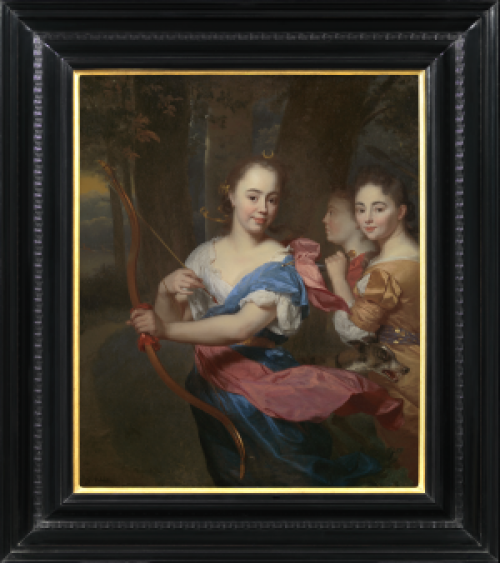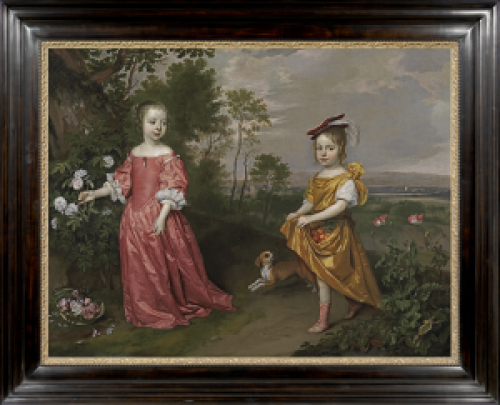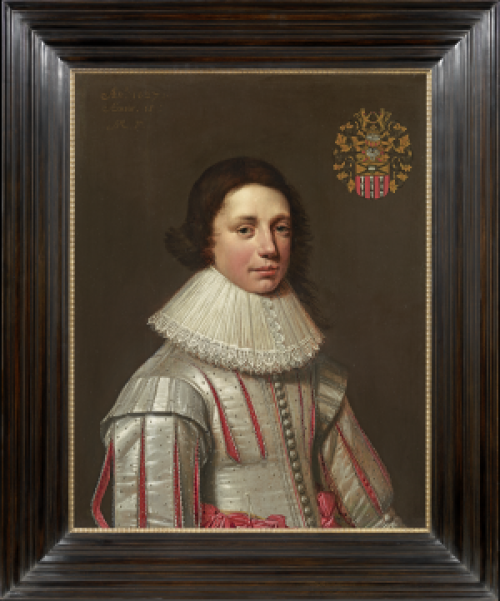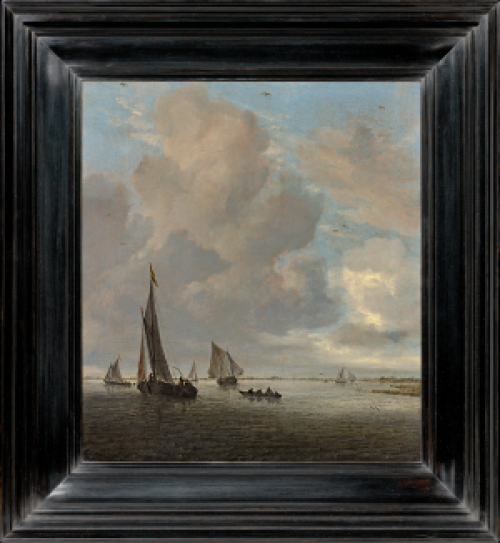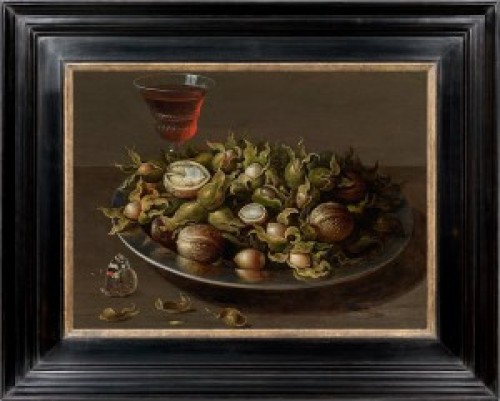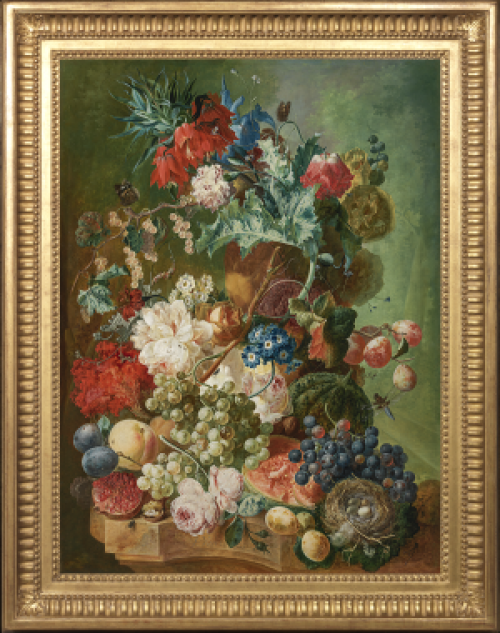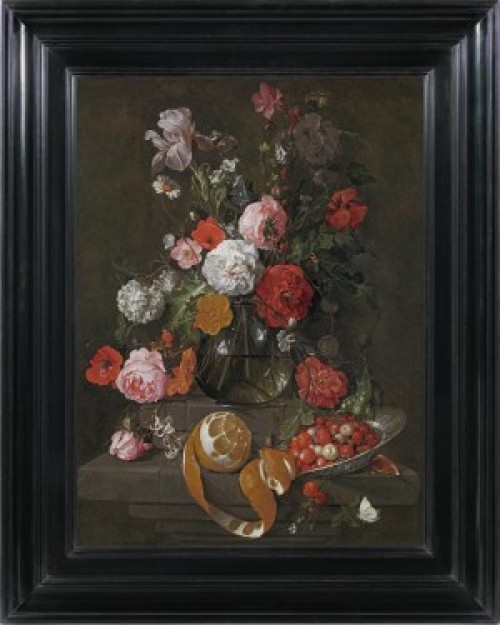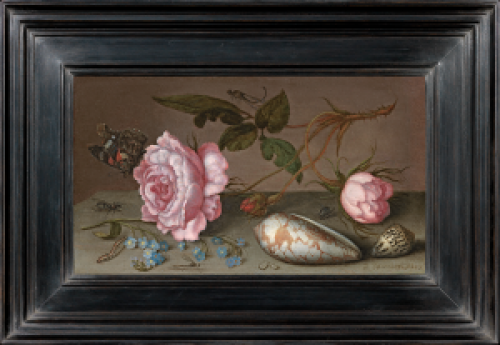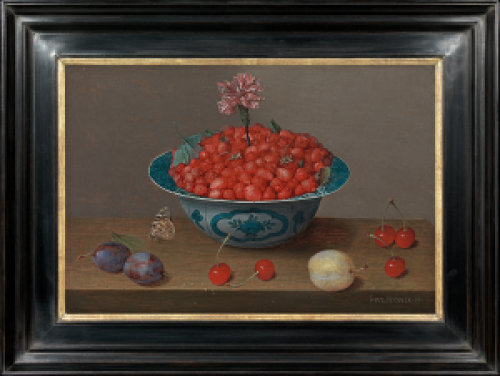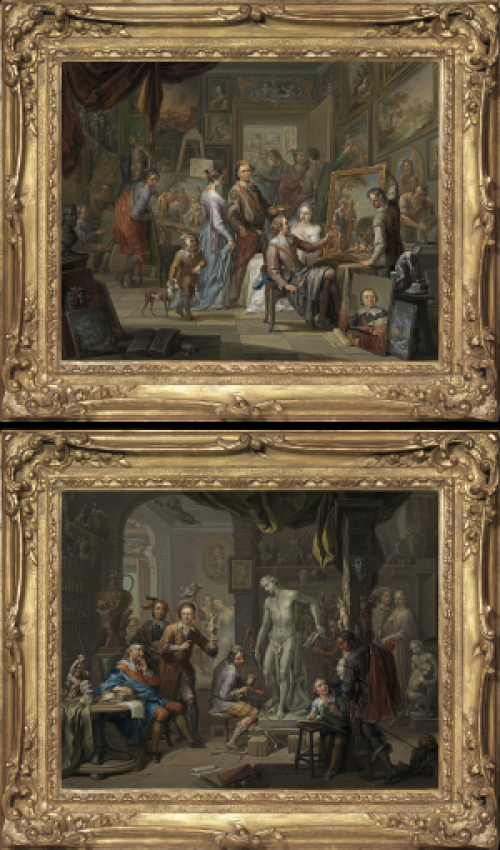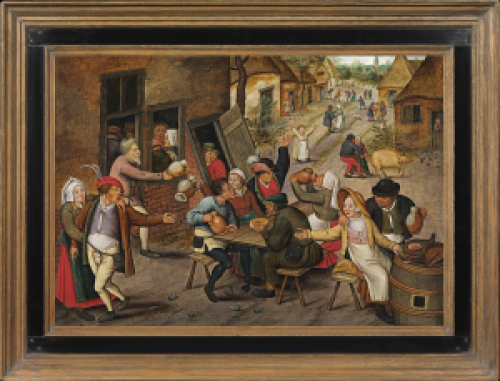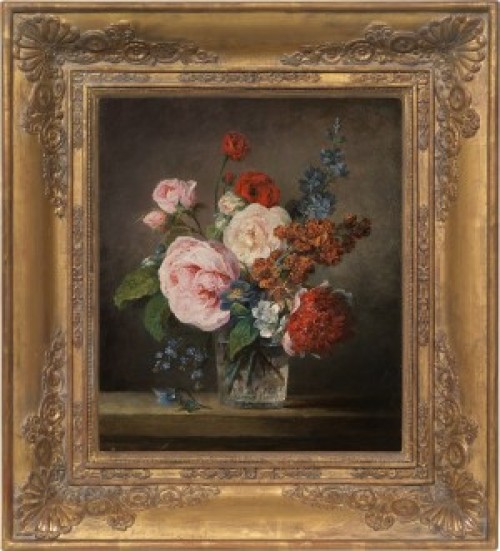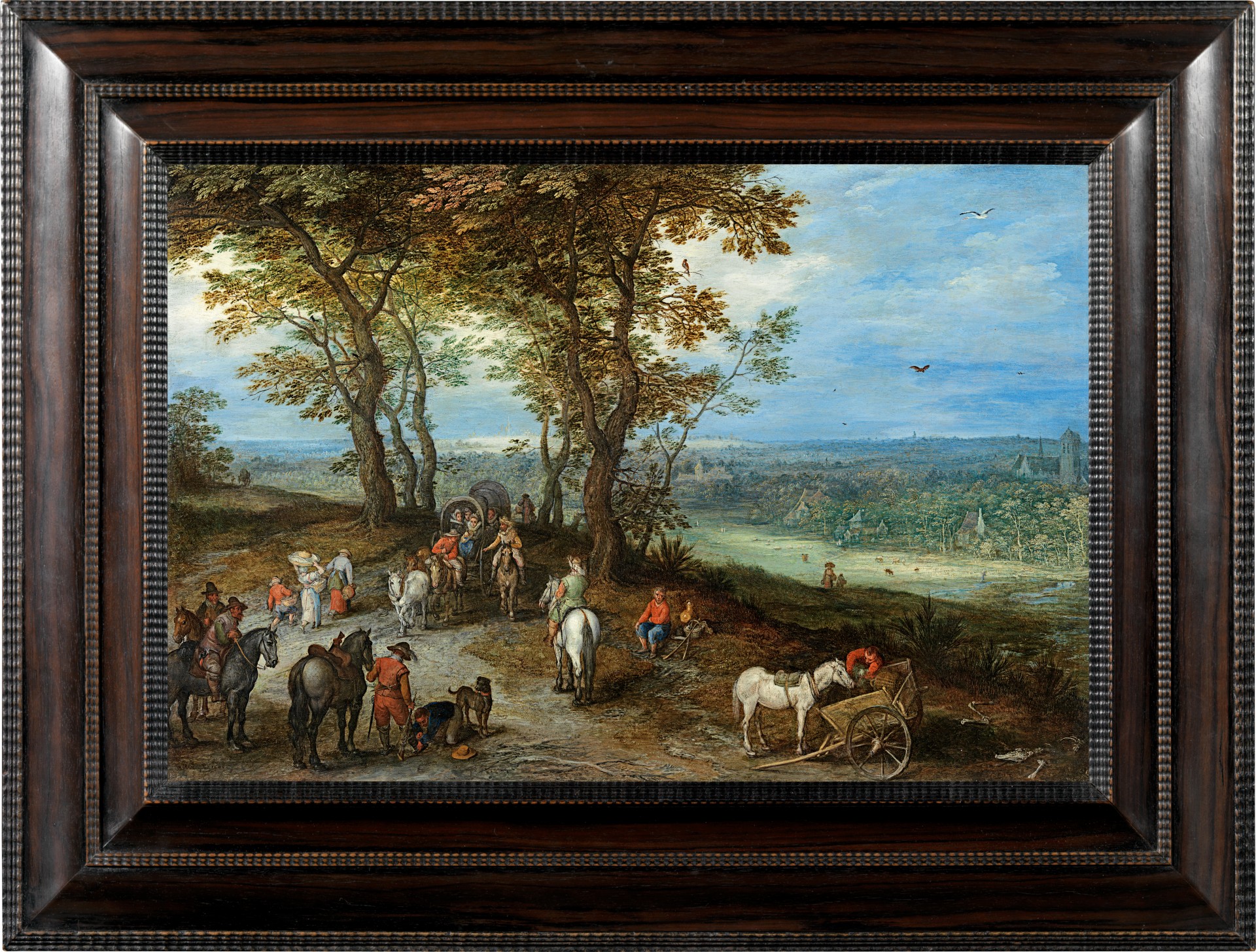JAN BRUEGHEL THE ELDER
1568 - Antwerp - 1625
Ref: CL 3696
Landscape with travellers
Signed and dated lower left: BREVGHEL 1606
Oil on copper: 11 x 16 5/8 in / 27.9 x 42.2 cm
Frame size: 17 ½ x 22 in / 44.4 x 55.9 cm
CL 3696
JAN BRUEGHEL THE ELDER
Brussels 1568 - 1625 Antwerp
Landscape with travellers
Signed and dated lower left: BRVEGHEL 1606
Oil on copper: 11 x 16 5/8 in / 27.9 x 42.4 cm
Frame size: 17 ½ x 22 in / 44.4 x 55.9 cm
The reverse of the copper panel is stamped with the maker’s mark of Peeter Stas (1565-1616) and the coat of arms of the city of Antwerp
Provenance:
Sale, Phillips, Sussex, 1822 (label on the reverse)
John Vivian, 4th Baron Swansea, DL (1925-2005);
his sale, Sotheby’s London, 6th July 1966, lot 117 (£12,800 to Leggatt)
Lady Beamish;
her estate sale, Sotheby’s London, 11th July 1979, lot 15
Private collection, UK;
Christie’s London, 3rd December 1997, lot 15;
Richard Green, London;
private collection, Europe, 1998;
Richard Green, London, 1999;
private collection, Europe
Richard Green, London, 2000;
private collection, USA
Exhibited:
London, Richard Green, The Cabinet Picture, 1999, pp.166-7, illus. in colour; 189
Literature:
Klaus Ertz, Jan Brueghel der Ältere, Cologne 1979, p.580, no.136
Weltkunst, May 2000, p.885
Klaus Ertz and Christa Nitze-Ertz, Jan Brueghel der Ältere (1568-1625): Kritischer Katalog der Gëmalde, vol. 1, Lingen 2008, pp.124-5, no.30, illus. in colour
This painting is one of a group of landscapes which Klaus Ertz groups round the theme of ‘the road to market’. They follow on from the compositions showing roads leading into villages and were often painted as pendants to them.
The present work can be compared to a slightly earlier oil on copper Road to market, signed and dated 1604, in the Princes of Liechtenstein Collection, Vaduz, inv. no.561[1]. This composition, with the central trees on raised ground, twisting together, in turn is based on a drawing of c.1595-6, Landscape with Tobias and the angel, in the Szépmüvészeti Museum, Budapest[2]. The Budapest drawing is Brueghel’s first exploration of a road winding through a valley which will develop into the ‘way to market’ theme.
In the Liechtenstein painting, the viewpoint has been lowered so that we engage more intimately with the scene than in the Budapest drawing. Brueghel continues this lowering of the viewpoint in An attack by bandits on the way to market, c.1605 (Pushkin Museum, Moscow)[3], which shares with the present Landscape with travellers a view of a distant, glittering city. In terms of quality and subject matter Landscape with travellers can also be compared to the Landscape with a chapel, c.1607 (Apsley House, Wellington Museum)[4], although in this case Brueghel has reversed the composition so that the valley is on the left.
By 1606 Brueghel had a flourishing career in his home town of Antwerp after the years 1589-96 spent learning his craft in Italy; in 1608 he was to be appointed Court Painter to the Archdukes Albert and Isabella, Habsburg Regents of the Netherlands. Landscape with travellers reflects the sophistication and innovation that he brought to landscape painting in the first decade of the seventeenth century. He has swept away the high viewpoint and multiple planes of sixteenth century landscapes to create a composition which flows seamlessly from foreground to distance through the control of colour and bands of light. Our view hovers only slightly above the foreground scene, filled with figures and movement. In the left foreground, a servant bends down to adjust the spur of a dismounted man whose sword proclaims his elevated status; a hunting dog looks on. Two companions watch him as the task is completed. Beyond them, peasants trudge to market with their baskets and flagons. A waggon filled with well-dressed ladies enjoying the summer sunshine is passing under the trees, while another peasant rests on the path. In the right foreground, a grey horse has been unhitched from a cart and is being fed some hay. It gazes rather anxiously at the bones of a fallen comrade.
In his foreground scene, Brueghel has orchestrated a drama of many levels of contemporary society: military men, bourgeois ladies, servants and peasants. It could symbolize the journey of all ranks of society through life. Travel in the early seventeenth century was not without its dangers, as Brueghel’s Pushkin Museum Attack by bandits indicates. The foreground man in red is armed to the teeth with gun, sword and dagger; the fate of the horse shows the dangers of slippery, rutted roads. The church in the valley is a reminder of the Christian faith that was an essential element and comfort of life in Brueghel’s Flanders.
Brueghel’s extreme delicacy of handling is evident in this work, as is his great sensitivity to landscape. Bright colours, such as the red clothing scattered across the figures and the diagonal of white accents in the dress of a peasant woman and the three grey horses, move the eye around the panel. Tiny brushstrokes evoke sunlight filtering through leaves as they tremble in the breeze. The densely wooded valley is painted with extraordinary softness. In the far distance, a great city, surely based on Antwerp, shimmers silver like the New Jerusalem. In the small compass of his 11 x 16 in copper panel Jan Brueghel conjures up a teeming and beautiful world.
The use of a copper support, with its smooth surface, allowed Brueghel to achieve an exceptional, miniaturist precision in his handling of detail in this work. The copper is stamped with the maker’s mark of Peeter Stas (1565-1616), the most prominent supplier of copper plates for artists in Antwerp at the time. The plate, heavy and very well made, would have been costly and would have been chosen for Brueghel’s finest productions.
Note on the panel maker’s mark by Professor Jørgen Wadum
Upon comparing the Stas stamp and analysing its design, specifically the circular monogram and the placement of the Antwerp hand below it, I can confirm that this is consistent with Stas' method from 1606. In that year, Stas introduced the circular monogram, but by 1607, he repositioned the hand of Antwerp above the monogram. The signature and issuance date by Brueghel further support that Landscape with Travellers was painted during the second half of 1606.
References:
- Wadum, Jørgen, ‘Peeter Stas: An Antwerp Coppersmith and His Marks’. In Painting Techniques History, Materials and Studio Practice, edited by Ashok Roy and Perry Smith, pp.140–144. Archetype Publications Ltd., 1998.
- Wadum, Jørgen, ‘Antwerp Copper Plates’. In Copper as Canvas, edited by Michael Komanecky, pp.93–116. Oxford University Press, 1999.
This painting has been included in the Mark on Art database at the RKD, The Hague.
JAN BRUEGHEL THE ELDER
1568 - Antwerp - 1625
Jan Brueghel the Elder was one of the most important Flemish artists of the first quarter of the seventeenth century, advancing the genres of landscape and flower painting. He was born in 1568 in Brussels, the second son of Pieter Bruegel the Elder (1525-1569), and trained with his grandmother, the miniature painter Mayken Verhulst Bessemers. From 1589/90-1596 he was in Italy, first in Naples and from 1592-5 in Rome, working for Cardinal Ascanio Colonna. There Jan became friends with Paul Bril (1554-1626), whose small-scale, naturalistic landscapes influenced him, and met his important, lifelong patron Federico Borromeo (1564-1631), Cardinal Archbishop of Milan, travelling to that city in 1595.
Brueghel was back in Flanders by October 1596 and set up a workshop in Antwerp. He was accepted into the Painters’ Guild of St Luke the following year and became its Dean in 1602. In 1599 he married Isabella de Jode (d.1603); their son, Jan Brueghel the Younger (1601-1678), was to be trained as a painter by his father. After the death of Isabella, Brueghel married Catharina van Marienberghe in 1605; they had eight children. Peter Paul Rubens (1570-1640) made a very fine portrait of Brueghel, his second wife and two of their children (1612-13; Courtauld Institute of Art, London), emphasizing their status and prosperity.
Jan made visits to Prague in 1603 and Nuremberg in 1606. By 1608 he was Court Painter to the Archdukes Albert and Isabella, Habsburg Regents of the Netherlands. Around 1613 Brueghel travelled to the northern Netherlands on official business with his friends and collaborators Rubens and Hendrik van Balen (c.1575-1632). In 1615 the Antwerp Magistrates presented four of Jan’s paintings to Albert and Isabella. Three years later Brueghel coordinated twelve leading Antwerp painters, including Rubens, van Balen, Frans Snyders, Josse de Momper and Sebastiaen Vrancx, on an Allegory of the Five Senses project to be presented to the Archdukes. These works were destroyed by fire in 1713. Brueghel and three of his children died in an Antwerp cholera epidemic in 1625; his son Jan II returned from Italy to take over his flourishing workshop. His most important pupil was the flower painter and Jesuit priest Daniel Seghers (1590-1661).
Jan Brueghel the Elder was a prolific and highly influential artist, known in his day as ‘Velvet Brueghel’ for his delicacy of handling and ‘Paradise Brueghel’ for his many paintings on this subject. His early forest scenes were influenced by Gillis van Coninxloo III (1544-1607); he also produced Biblical paintings which adapt elements of his father’s work into his own miniaturist style. Crowded scenes of Hell were influenced by frescoes observed in Italy, for example Michelangelo’s Sistine ceiling and Luca Signorelli’s work in Orvieto. Jan painted panoramic landscapes, beginning with a high, detached viewpoint but moving in the first decade of the seventeenth century towards a more naturalistic and direct engagement with nature, informed by veils of atmosphere. Also in that decade, he pioneered flower painting that was independent of any Biblical or heroic context. Jan’s flowers are superbly observed over several months and then placed together in a convincing bouquet; in one of his letters to Cardinal Borromeo, he mentions travelling specially to Brussels to draw some particularly rare floral specimens from life. Brueghel also executed many views of village life; market days, travellers on the road and festivals are presented with a refinement that would appeal to the élite for whom he painted.
The work of Jan Brueghel the Elder is represented in the Kunsthistorisches Museum, Vienna; the Prado, Madrid; the Alte Pinakothek, Munich; the Pinacoteca Ambrosiana, Milan; the National Gallery, London; the Hermitage, St Petersburg and the J Paul Getty Museum, Los Angeles.
[1] Ertz 2008, op. cit., pp.120-1, no.28, illus. in colour; see Essen, Villa Hugel and Vienna, Kunsthistoriches Museum, Breughel-Brueghel, ed. K Ertz et. al., pp.188-9, cat. 45, illus. in colour.
[2] Ertz 2008, ibid., p.120 and Breughel-Brueghel, pp.438-9, cat. 152, illus. in colour.
[3] Ertz 2008, ibid., pp.122-3, no.29, illus.
[4] Ertz 2008, ibid., p.129, no.33, illus.

